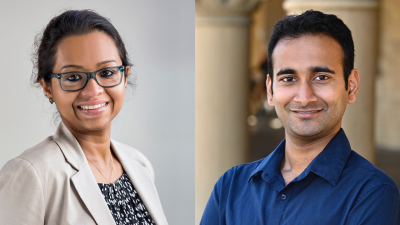May 15, 2020
Arguably the most visible of all prescriptions to the COVID-19 pandemic this year have been guidelines or imposed restrictions commonly referred to as “social distancing.” Less physical contact, the thinking goes, means a lowered risk of viral transmission.
Like the virus itself, however, stress and anxiety stemming from overconsumption of news or other media can spread through social networks. As the mental health fallout becomes clearer, are some similar social media distancing recommendations needed to stem the flow through the online world?
A multidisciplinary team of researchers at Georgia Tech, Washington University-St. Louis, and the University of Wisconsin-Madison argue that these mental health implications of the pandemic are equally important, and a new grant from the National Science Foundation (NSF) has recently funded new research to that effect.
“It’s not just the fear and anxiety that I might get infected or I might infect or know someone who is infected,” said Munmun De Choudhury, an associate professor in Georgia Tech’s School of Interactive Computing and the co-principal investigator on the project. “It’s all of these things around it that are furthering the psychological impact. It’s very different from other kinds of illnesses or pandemics because of the uncertainty of the crisis. We simply don’t know how long we are into it.”
The grant is funded by the NSF’s Rapid Response Project program, which is intended for research that addresses an immediate need within society. It has provided $200,000 toward the yearlong project.
The research will combine investigations in two separate environments: the online world, where news, personal posts, videos, and other media are shared rampantly across social networks, and the offline real world, where the epidemiological data about the spread of the virus or economic data about the financial fallout can be measured.
For the former, they will use social media data from various popular social platforms – Twitter, Reddit, and YouTube – to measure the spread of information and how consumers of it express themselves in terms of anxiety or fear, or what they are saying about their own psychological wellbeing.
“How often are people expressing anger or fear or blaming someone through their posts?” said Srijan Kumar, an assistant professor in Georgia Tech’s School of Computational Science and Engineering and the other co-principal investigator. “We’ll develop new classifiers using natural language processing that will help us classify social posts into two categories: either anxiety-inducing or anxiety itself.”
This is new territory, according to De Choudhury. Although there have been other pandemics such as the 1918 influenza epidemic, none of this magnitude have taken place during the digital/social age. And while social media provides an important mechanism for staying informed and remaining in contact with friends and loved ones during the difficult social distancing measures, overexposure could result in negative mental health consequences.
“There is probably a sweet spot,” De Choudhury said. “Just like we need physical distancing in the real world, we probably need to practice distancing from social media or online information to an extent to avoid consuming too much anxiety-inducing media, while also staying informed.
“If I say something, it doesn’t just affect me. It affects all the people who read my posts. If they share it or if they post something, then it affects all of their social neighbors. It can be an outward ripple that affects people. We want to measure that, how they spread through social networks.”
They’ll compare that data with the other element: the offline world. Currently, people in New York City are likely more stressed and anxious in a different way than people in Georgia. New York has been the epicenter of the viral outbreak in the United States, meaning that much of the anxiety locally stems from the virus itself.
Will I contract the virus? Will someone I know contract the virus? Can I go to the store for groceries? How much disinfecting is required when I return home?
And then, you can tease out that geographical data. How are higher-income individuals stressed in comparison to lower-income? What about differences along racial lines? Data has shown higher mortality rates in African-Americans, for example, which leads to different fears than those in other communities.
In U.S. cities where there is also sufficient social media data, they will examine this offline data to see rates of infection, fatalities, when shelter-in-place was imposed, and more.
The final piece will be what they will do with this information. The goal is to create tools for social platforms to provide coping techniques or guidelines for use.
“Maybe that might include encouraging you to limit the amount of time you spend on social media,” Kumar said. “Or, maybe you step out and do something with family members. Some kind of physical activity. Then we can begin to examine how people react to these messages. Do we see that their anxiety levels are coming down, or not?”
“In this time, we have a very unique lens to study this pandemic in a whole new light as opposed to other events of a global scale,” De Choudhury said. “There is no guarantee this won’t come back. And even if it doesn’t, something else will. Being able to have these tools built and available will better prepare us for the future.”
For more coverage of Georgia Tech’s response to the coronavirus pandemic, please visit our Responding to COVID-19 page.


